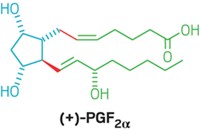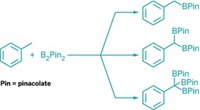Advertisement
Grab your lab coat. Let's get started
Welcome!
Welcome!
Create an account below to get 6 C&EN articles per month, receive newsletters and more - all free.
It seems this is your first time logging in online. Please enter the following information to continue.
As an ACS member you automatically get access to this site. All we need is few more details to create your reading experience.
Not you? Sign in with a different account.
Not you? Sign in with a different account.
ERROR 1
ERROR 1
ERROR 2
ERROR 2
ERROR 2
ERROR 2
ERROR 2
Password and Confirm password must match.
If you have an ACS member number, please enter it here so we can link this account to your membership. (optional)
ERROR 2
ACS values your privacy. By submitting your information, you are gaining access to C&EN and subscribing to our weekly newsletter. We use the information you provide to make your reading experience better, and we will never sell your data to third party members.
Synthesis
Metal-Free Olefin Hydrogenations
New technique uses a frustrated Lewis pair as an alternative catalyst
by Sarah Everts
September 10, 2012
| A version of this story appeared in
Volume 90, Issue 37
Adding hydrogen to a carbon-carbon double bond is one of the most widespread reactions used in all corners of the chemical industry. But typically, a metal catalyst is required. Chemists led by Jan Paradies of Karlsruhe Institute of Technology, in Germany, have now unveiled a metal-free hydrogenation strategy that uses a frustrated Lewis pair as an alternative catalyst (Angew. Chem. Int. Ed., DOI: 10.1002/anie.201204007). A frustrated Lewis pair is a reactive complex made up of a Lewis acid and a Lewis base in which the two partners are so bulky they can’t completely neutralize each other. Since they were discovered in 2006, they have been used to reduce unsaturated bonds such as imines, silyl enol ethers, and nitriles. But they didn’t seem to work on olefins. Paradies and coworkers hydrogenated more than a dozen olefins using H2 and a frustrated Lewis pair—for example, one made from B(C6F5)3 and (C6F5)P(C6H5)2. They propose, from experimental and computational evidence, that the reaction mechanism involves protonating the olefin with a subsequent hydride transfer. “This is the first and only metal-free process using molecular hydrogen for one of the oldest chemical transformations,” Paradies says.





Join the conversation
Contact the reporter
Submit a Letter to the Editor for publication
Engage with us on Twitter